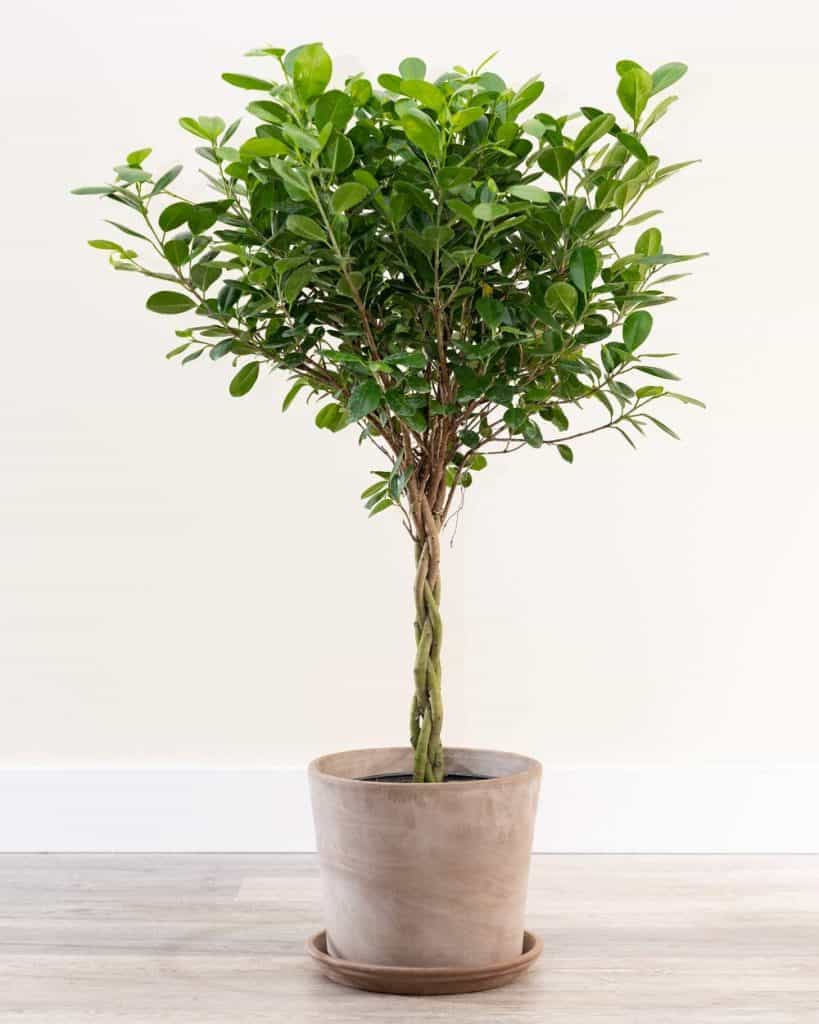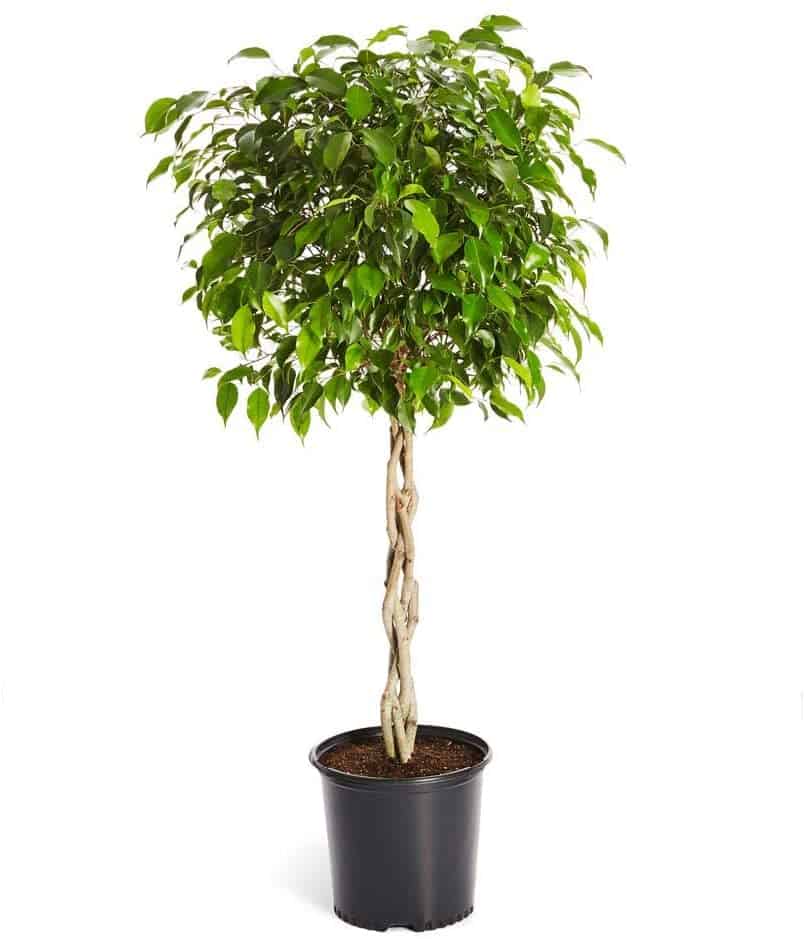Weeping Fig Trees, also known as Ficus benjamina, are well known for being excellent indoor plants. It’s a rare species of tree, but it’s great for improving the quality of your air indoors as well as thriving in limited light.
For offices or your home, this small tree can be a spectacular addition to add some personality and health benefits to your space.
Since it’s a fast grower and has specific requirements for growth, the Weeping Fig Tree needs plenty of care to be healthy. Let’s talk about how to take care of this plant, the background and the history, and other important details to make sure you’re prepared to add your Ficus plants to the family.

This post includes affiliate links.
Table of Contents
Background and History
The Weeping Fig Tree (scientific name: F. Benjamina) is part of the Ficus plant genus, and it’s known for its long branches and glossy leaves. As outdoor plants, these Ficus trees can grow to be up to 60 feet tall, but when they’re kept inside, people prune them to keep them 3 to 6 feet tall.
*Find 9 large plants here!
The natural habitat for this tree is the tropical climate of the rainforest from Southeast Asia to Northern Australia, but it’s a common indoor plant. Ficus trees like to remain in the same location in your home.
They have benefits for the air, helping remove specific toxins, like formaldehyde, xylene, and toluene. The dark green leaves have a tendency to drop, which can be a problem if you’re looking for easy care and cleanup.
*Find more plants that clear the air here!
Weeping Fig Tree Care Tips
Let’s chat through how to care for a weeping fig tree!
Watering

Image via Amazon
In the growing season, it’s important to make sure these plants are watered regularly. This helps them remain healthy and grow a lot over the course of the year. In the drier seasons, these plants don’t need as much water.
The plant should not sit in excess water too long because it could develop root rot. The most important thing is to have a consistent watering schedule to ensure it’s getting enough water.
Lighting
This plant needs a bright spot in your house with lots of indirect light. The sunlight the Ficus likes best is bright light directly in the morning sun, which can help make sure the plant has similar conditions to its natural habitat.
If left indoors, the plant should be kept in the same place where it gets enough light and not moved around a lot. Moving it will affect its growing habits and the amount of leaf drop in your space.
Temperature
Because this plant is used to humid rainforests, it doesn’t handle low temperatures well. Temperatures should be within 65-85 degrees Fahrenheit. If the temperature drops below 70 degrees in your home, your Ficus tree could suffer.
Humidity
This plant enjoys high humidity and moisture! The higher the humidity in the room, the better. This plant should be near humid conditions, so you might consider getting a humidifier for the space where your Ficus tree lives to keep humidity levels up.
Keeping the top of the soil moist around your base can help keep your plant adequately warm. You might also want to consider regularly misting to make sure that your plant is happy and healthy.
Fertilizer
These plants feed a lot and need a lot of fertilizer throughout the growing season. Slow-release pellets work best. You can add these in the beginning of the Ficus tree’s growing season to help it grow rapidly.
A little magnesium and manganese might be necessary if you find your plant is still experiencing leaf loss within optimal conditions in your space.
Pruning

Image via Amazon
Benjamina Ficus can grow to be a huge tree, so unless you want it to reach the ceiling, you’ll want to prune it. But this is only possible when your Ficus tree is not actively growing. Otherwise, you risk hurting the plant when it is actively attempting to grow.
When the plant is in dormancy, you should prune your plant and pick away the dead leaves, branches, and other parts that could be just sitting in your plant’s pot.
Diseases and Pests
Your Ficus tree is susceptible to disease problems and fungal infections, but with regular care, you shouldn’t have any issues regarding diseases or pests. Just make sure to care for your plant and properly prune, water, and light your tree.
Toxicity
They are not considered toxic, but this plant can contribute to latex allergies. Don’t keep it in the same space as someone who suffers from this issue.
Propagating
Without a rooting hormone, it is easy to propagate and take care of your Ficus tree. The best way to do this is to take a cutting in the spring. Make sure it has two sets of leaves and the branch is healthy.
Then, put the cutting into moist peat moss, and cover the container with a large plastic bag. Keep the plant in the bright indirect light and mist it daily.
After about two to four weeks, your plant will be ready to acclimate to your room. After six weeks, you can add the cutting to a proper 6-inch pot.
Potting and Repotting
These plants are rapid growers, so you’ll probably have to repot your tree. Luckily, the Ficus is very adaptable and does well with a change in situations. Watch your plant to see if the root system is growing too deep. That’s when it’s time to move your plant to a new pot.
Conclusion
The Ficus tree is one of the best plants you can have in your space, not only for the air quality, but also to add personality to your home or office.
As long as you follow the steps outlined here, you will have a plant that lasts many years and breathes life into your indoor space.
Find other ficus plants here!
- Rubber Plant Care
- Ruby Rubber Plant
- Fiddle Leaf Care Tips
- And learn why your fiddle leaf has brown spots!

